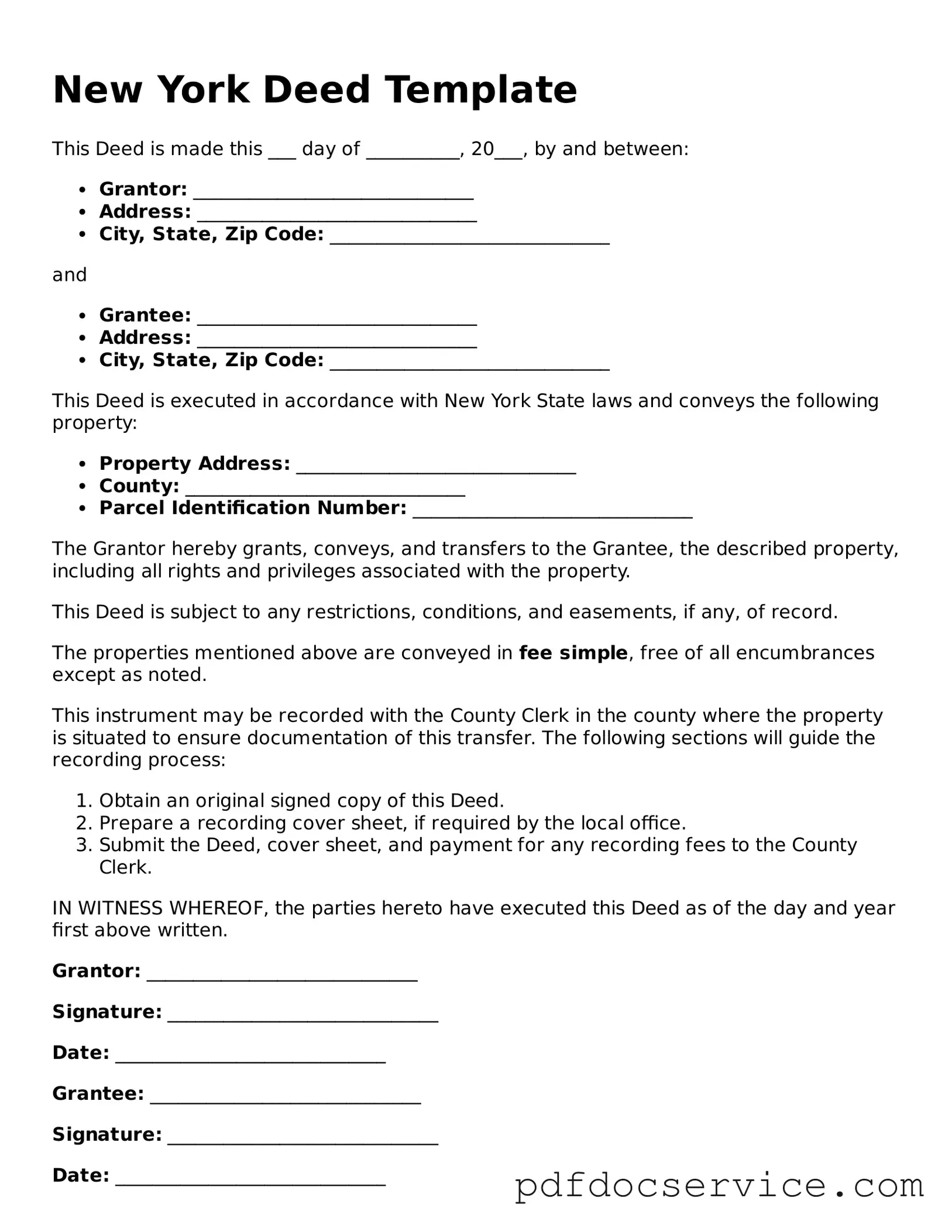The New York Deed form plays a crucial role in the transfer of real property ownership within the state. This legal document serves as a formal means of conveying title from one party to another, ensuring that the transaction is recognized and enforceable under New York law. Key aspects of the form include the identification of the grantor, or the person transferring the property, and the grantee, the individual receiving the property. Additionally, the form must contain a clear description of the property being transferred, which often includes details such as the property's address and any relevant boundaries. The deed must also be signed and notarized to validate the transaction, making it essential for parties involved to understand the requirements for proper execution. Furthermore, the New York Deed form can take various forms, such as a warranty deed or a quitclaim deed, each serving different purposes and offering varying levels of protection for the parties involved. Understanding these nuances is vital for anyone engaging in real estate transactions in New York, as it ensures that their rights and interests are adequately protected throughout the process.
